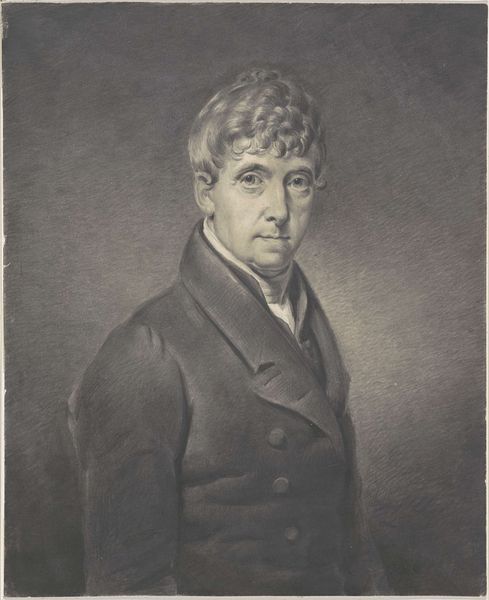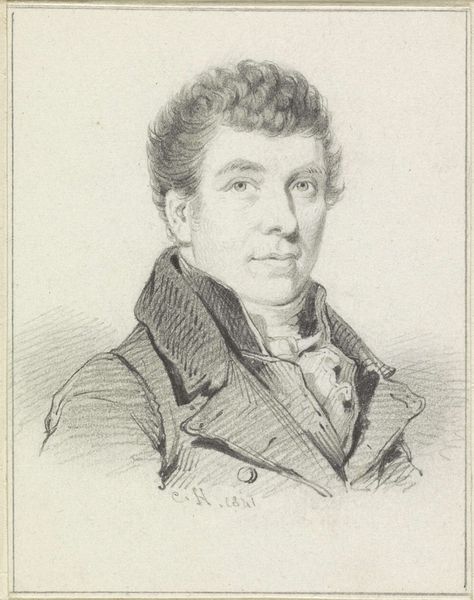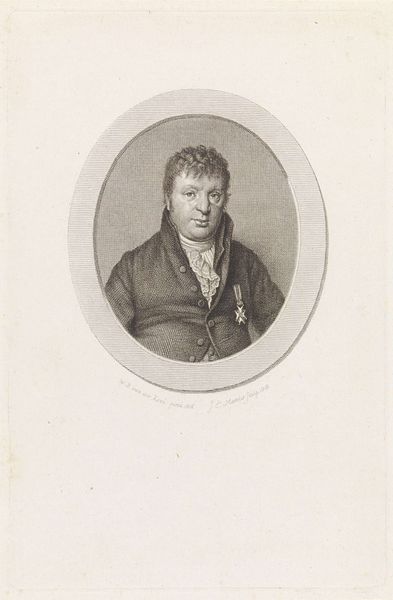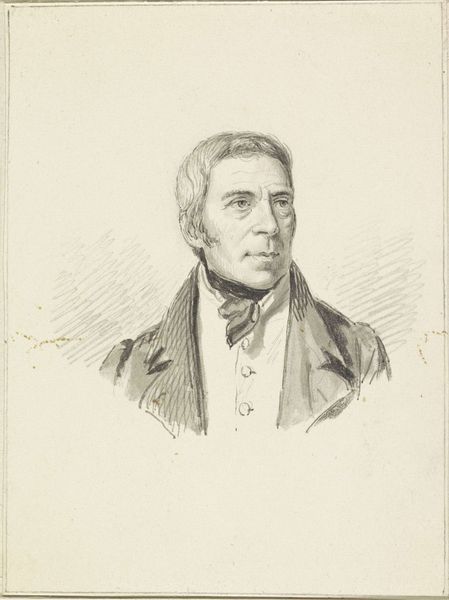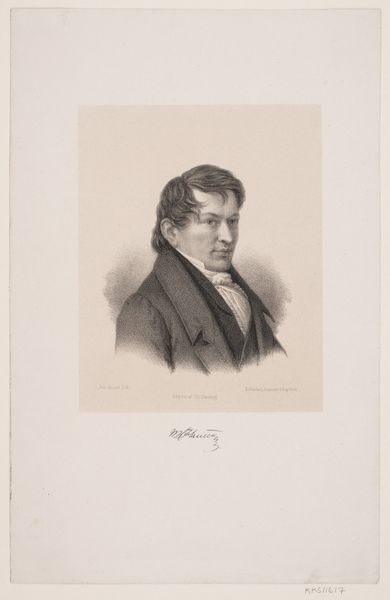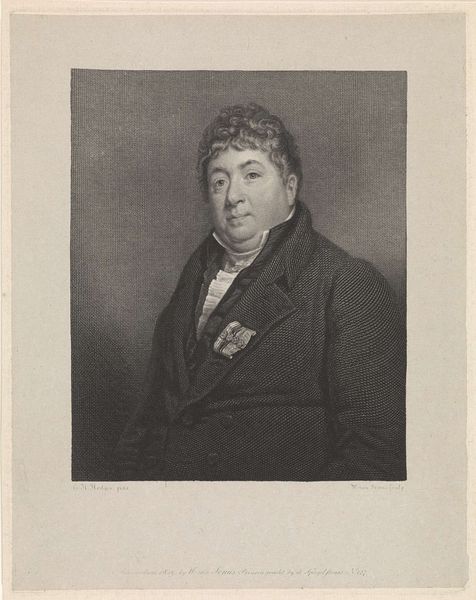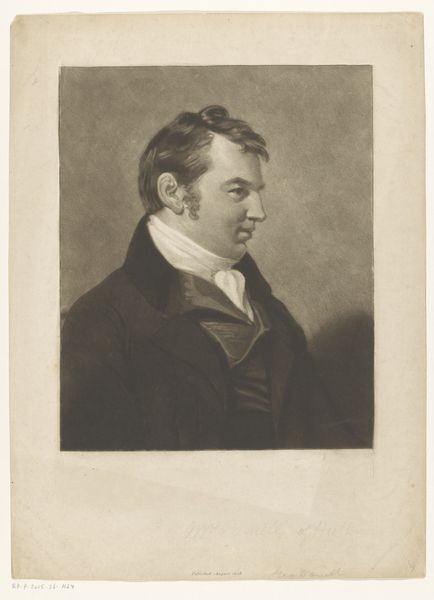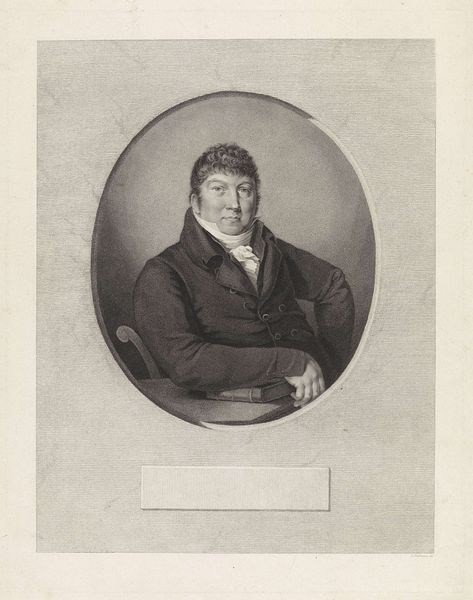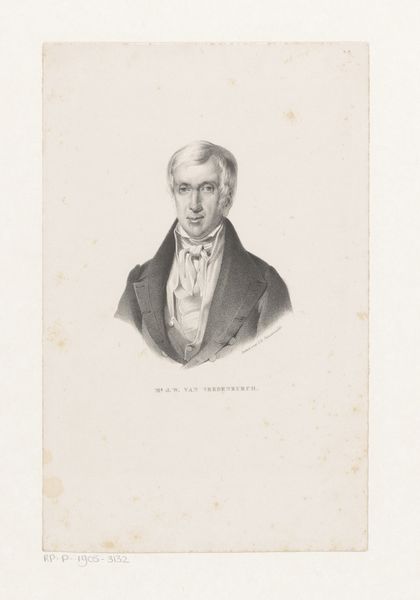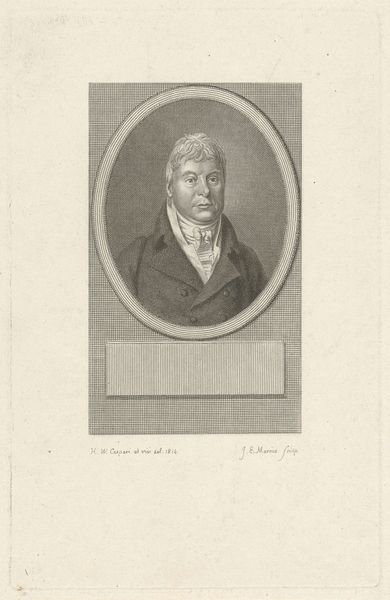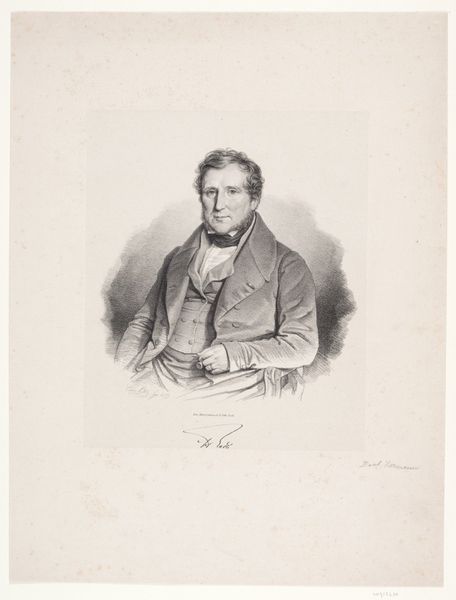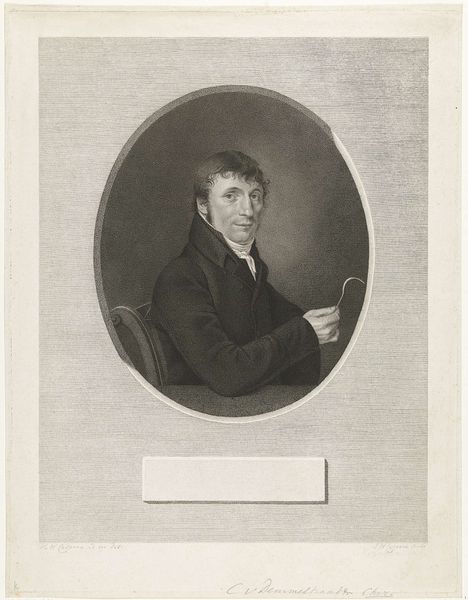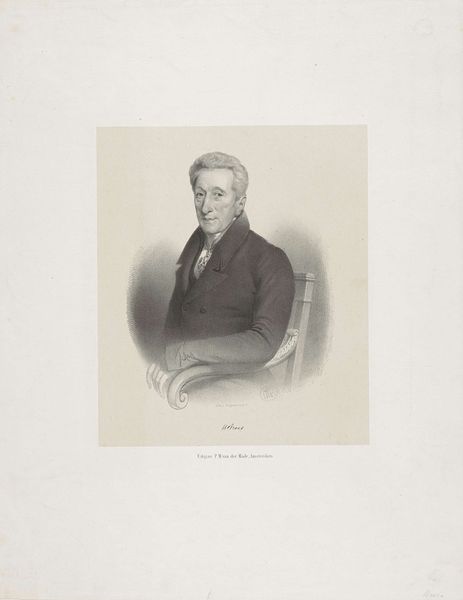
graphite, engraving
#
portrait
#
16_19th-century
#
charcoal drawing
#
pencil drawing
#
graphite
#
graphite
#
engraving
#
realism
Dimensions: height 268 mm, width 215 mm
Copyright: Rijks Museum: Open Domain
Curator: This is a portrait of Gerardus Vrolik. The work is simply listed as created somewhere between 1783 and 1851 and it resides here at the Rijksmuseum. We believe it is the work of Willem van Senus. It appears to be executed using graphite, likely in the form of an engraving or drawing. Editor: Immediately, there’s a solemn dignity conveyed by the subject, isn’t there? He's framed quite formally, his gaze direct, his demeanor resolute yet tinged with an almost weary gravitas. It feels very much a portrait of the Dutch elite from that period. Curator: Yes, absolutely. Considering the socio-political backdrop of the era, with its emphasis on civic virtue and intellectual pursuits, this portrait resonates with the values that the elite classes sought to embody and project. Editor: His clothing seems to denote a level of authority and belonging within established structures. Given that this work portrays an important scientist from Amsterdam, how does it speak to the relationship between science, identity, and power within 19th-century Dutch society? Curator: It’s vital to recognize the role institutions and individuals, such as the portrayed professor Gerardus Vrolik, played in defining what constituted "acceptable" scientific knowledge. Who had the power to publish what became, by definition, a statement that solidified one's place in the socio-cultural hierarchy. He occupied an institutional space. The medal signals this man was more than ordinary. Editor: Absolutely. Thinking about how science at the time perpetuated racist ideologies is important, for instance. It's naive to divorce this portrait from the societal power structures and the subject’s access and investment in those structures, even if indirectly. Curator: Right, viewing it solely as an artistic expression is insufficient. Recognizing how Vrolik might have benefited from those very structures adds another layer of interpretation to this image. Editor: Indeed. This portrait of Gerardus Vrolik serves as a powerful reminder of the intertwining of personal identity, institutional authority, and societal structures. Curator: I agree. It calls for a critical assessment of power dynamics embedded within representations of influential figures.
Comments
No comments
Be the first to comment and join the conversation on the ultimate creative platform.
